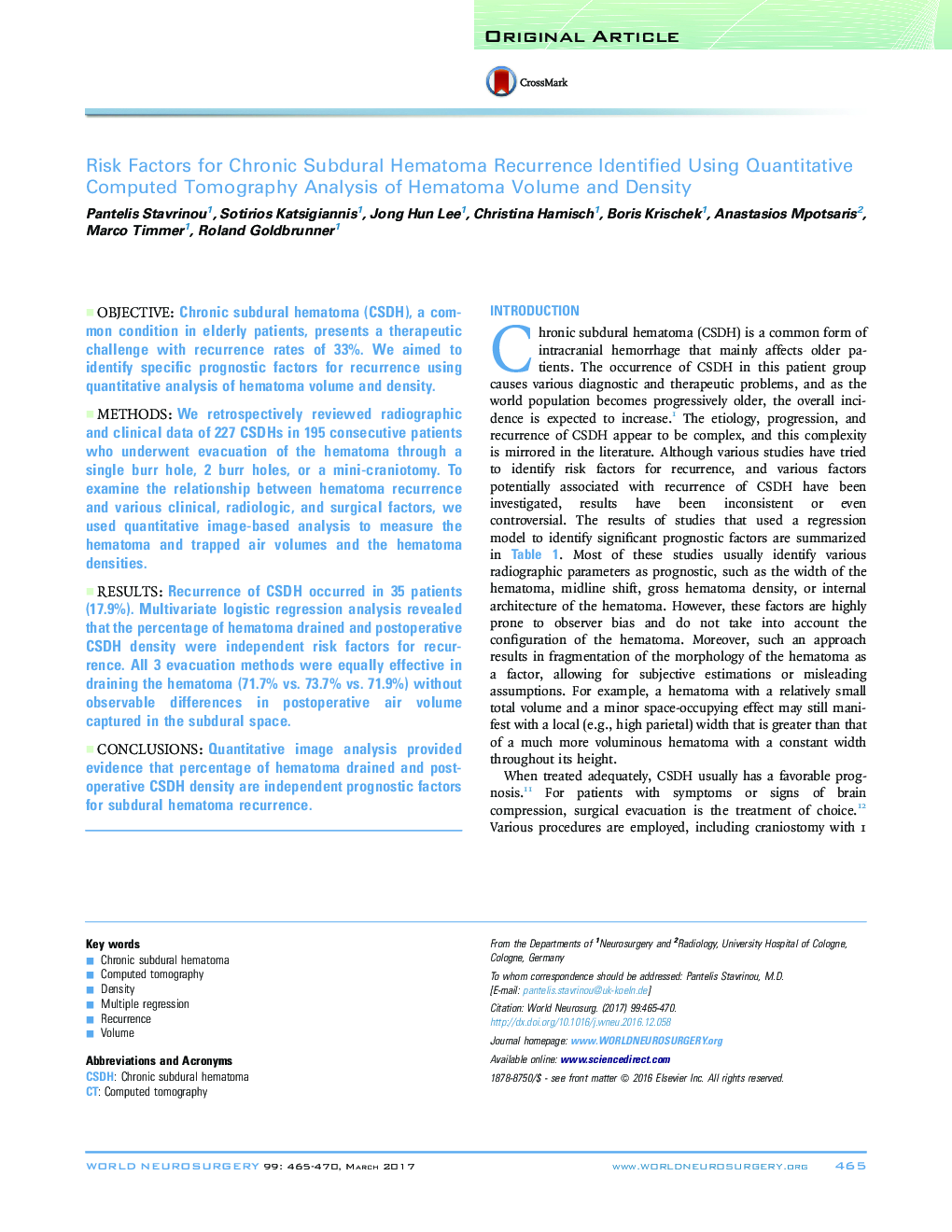| Article ID | Journal | Published Year | Pages | File Type |
|---|---|---|---|---|
| 5634851 | World Neurosurgery | 2017 | 6 Pages |
ObjectiveChronic subdural hematoma (CSDH), a common condition in elderly patients, presents a therapeutic challenge with recurrence rates of 33%. We aimed to identify specific prognostic factors for recurrence using quantitative analysis of hematoma volume and density.MethodsWe retrospectively reviewed radiographic and clinical data of 227 CSDHs in 195 consecutive patients who underwent evacuation of the hematoma through a single burr hole, 2 burr holes, or a mini-craniotomy. To examine the relationship between hematoma recurrence and various clinical, radiologic, and surgical factors, we used quantitative image-based analysis to measure the hematoma and trapped air volumes and the hematoma densities.ResultsRecurrence of CSDH occurred in 35 patients (17.9%). Multivariate logistic regression analysis revealed that the percentage of hematoma drained and postoperative CSDH density were independent risk factors for recurrence. All 3 evacuation methods were equally effective in draining the hematoma (71.7% vs. 73.7% vs. 71.9%) without observable differences in postoperative air volume captured in the subdural space.ConclusionsQuantitative image analysis provided evidence that percentage of hematoma drained and postoperative CSDH density are independent prognostic factors for subdural hematoma recurrence.
